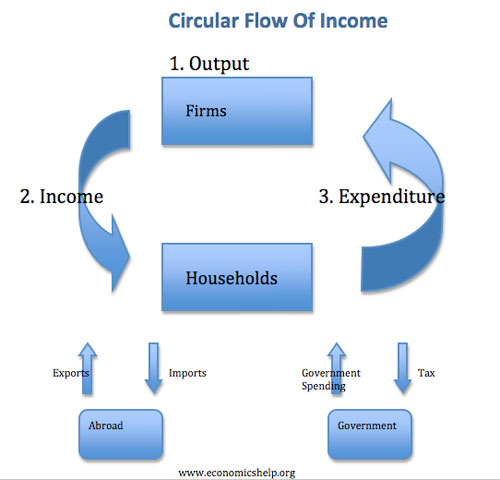The Circular flow of income diagram models what happens in a very basic economy.

In the very basic model, we have two principal components of the economy:
- Firms. Companies who pay wages to workers and produce output.
- Households. Individuals who consume goods and receive wages from firms.
This circular flow of income also shows the three different ways that National Income is calculated.
- National Output. The total value of output produced by firms.
- National Income. (profit, dividends, income, wages, rent) This is the total income received by people in the economy. For example, firms have to pay workers to produce the output. Therefore income flows from firms to households.
- National Expenditure. Total amount spent on goods and services. For example, with wages from work, households can then buy goods produced by firms. Therefore, the spending goes back to firms.
This represents a simple economic model; it is a closed economy without any government intervention.
In the real world, it is more complicated. We also add two more components:
- Government. The government taxes firms and consumers, and then spend money, e.g. health care and education.
- Foreign sector. We sell exports abroad and buy imports. Therefore, there is a flow of money between one country and the rest of the world.

